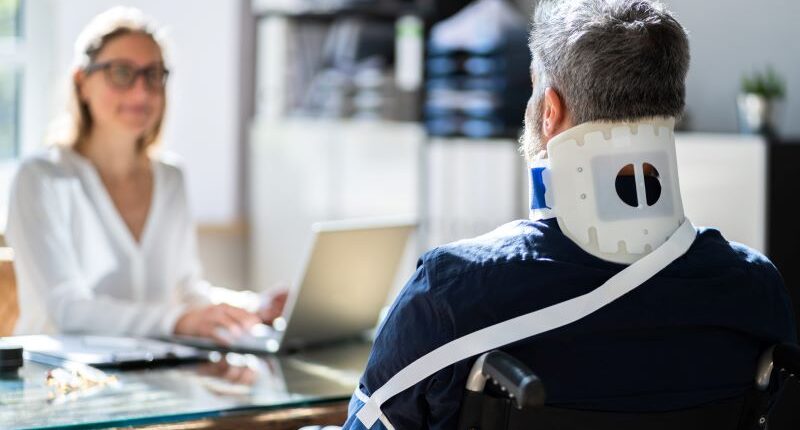What is the “Last Clear Chance” Doctrine in Personal Injury Law?

The last clear chance doctrine is a legal principle that states that even if a plaintiff was negligent, a defendant can still be held liable for an accident if the defendant had the last clear chance to avoid it. The doctrine applies in situations where both parties were negligent, and it is uncertain which party’s negligence was the cause of the accident.
Continue reading for an in-depth analysis
Introduction
Not every personal injury case is cut and dry – with one person who is clearly at fault and then another who is not. Sometimes both people have a shared responsibility for an accident’s outcome.
In certain personal injury cases where this is found, attorneys may use the last clear chance doctrine (also known as the last clear chance rule). In this instance, when a case has shared fault, the plaintiff may still be able to recover damages from the defendant.
According to this doctrine, if the defendant had a chance to avoid causing injury to the plaintiff just before the accident occurred, the plaintiff should be entitled to damages.
Let’s take a closer look.
What is the Last Clear Chance Doctrine?
In a nutshell, the last clear chance rule says that even if the plaintiff was negligent in a personal injury case, they may still be able to recover damages – as long as it can be proved that the defendant could have avoided the accident by using ordinary and reasonable care.
Here is an example:
Consider a pedestrian walking in the middle of a road instead of the sidewalk or designated crosswalks. A distracted driver could hit the pedestrian – as they were not counting on a person to be walking in the middle of the street. Yet, if they weren’t distracted while driving, they could have seen the pedestrian and either stopped or changed lanes to avoid the accident.
Under the last clear chance doctrine, the plaintiff could be entitled to some sort of compensation – despite playing a role in causing the accident.
This rule applies to many different states. The wording may vary, but the meaning behind it remains the same. It always comes down to the fact that the defendant is the one who had the last chance to avoid the accident – but didn’t.
Depending on the situation, the plaintiff may be entitled to some compensation – instead of none at all.
Last Clear Chance: Proving the Case
It can be tough to prove what someone could have or should have done. And even more so, how that alternate action could have altered the outcome. An experienced attorney knows that to be successful, there are a few things that must be proven in these cases. They include:
- The plaintiff ended up in this situation as a result of his own negligence
- As a result of the plaintiff’s negligence, the injurious situation caused by the defendant could not have been avoided
- The defendant was aware the situation was dangerous and could have taken extra care to ensure the safety of the plaintiff
- The defendant has the last clear chance to avoid injury to the plaintiff but failed to take action
- The failure to take this action in the last opportunity to avoid injury resulted in the plaintiff getting hurt
In other words, when it comes down to the accident between the plaintiff and the defendant, the latter has the last chance to avoid it and change the outcome to avoid injury.
The Burden of Proof
Determining the burden of proof when it comes to the last chance doctrine falls on the plaintiff. This is the party that must be able to prove without reasonable doubt that the defendant had the last clear chance to avoid the accident and, thus, avoid the injury.
Proving any case is often tough as you try to make the jury see exactly what happened – and agree with your side. When it comes to these cases, it can be even tougher since you are looking at what they could have done in that last moment but failed to do. This is something that you will want to have legal representation for. An experienced attorney will be able to give your case the attention it deserves and find the best way to approach it.
It should be noted that if both the plaintiff and the defendant are found to have been inattentive to the situation and played an equal role in the accident, then the last clear chance doctrine does not apply – and the defendant is not responsible for any damages.
California’s Comparative Negligence
Contributory negligence states that if a plaintiff has been negligent in a case in any way and the negligence of the plaintiff was a cause of the accident or injury – even in the smallest part – then the plaintiff cannot recover damages from the defendant.
The last clear chance doctrine is seen as an exception to contributory negligence in order to help plaintiffs gain some compensation in these cases.
In California, contributory negligence no longer applies – pure comparative negligence has been adopted. Therefore, although it may be referred to in some personal injury cases, the last chance doctrine no longer plays much of a role within the state.
Pure comparative negligence allows the plaintiff to recover some damages after an accident – even if they are found to be primarily responsible for the accident. Though the compensation received will be reduced based on the amount of fault. For instance, consider a personal injury case in which the plaintiff was found to be 25% at fault for an accident that occurred and they have suffered $80,000 in damages. The plaintiff would receive damages that were reduced by 25% and, in this case, would only receive $60,000 in damages.
While it is not the same exact thing as the last clear chance doctrine, comparative negligence does give personal injury attorneys the opportunity to gain compensation for their clients, despite a percentage of fault.
Getting Compensated After an Accident
There are so many different possibilities when it comes to awarding damages in personal injury cases in California. However, trying to handle it alone may have you up against some powerful legal teams, resulting in you missing out on much-deserved compensation.
Invest in your case by seeking a highly skilled and experienced personal injury attorney. This will give you the greatest chance of reaching a successful outcome.
Are you in search for a certified attorney to represent you?
Let us help you find one today!


